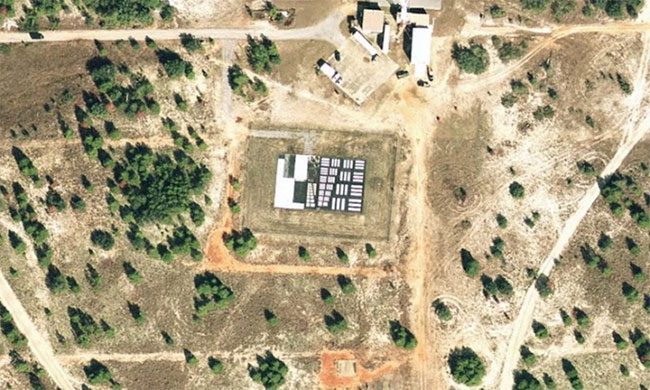The giant barcode-like symbols embossed on the asphalt roads in the United States were used in the 20th century to calibrate the lenses of cameras on aircraft and satellites.

Barcode-like symbols used for optical calibration near Eglin Air Force Base. (Photo: Google Earth).
Most of these symbols were created in the 1950s and 1960s as the Cold War intensified, and the United States sought to enhance aerial reconnaissance technology, according to IFL Science. When viewed closely from the ground, these symbols can be seen using thick black or white paint on a flat concrete surface or asphalt. They are typically smaller than a basketball court and consist of many organized barcode-like lines, aiding aircraft and satellites in calibrating the optical resolution of their imaging equipment.
The symbol system acts like an eye chart used by optometrists, where the smallest clusters of characters can mark the limits of resolution for optical devices, according to the Center for Land Use Interpretation (CLUI). For aerial photography, it provides a basis for testing, calibrating, and focusing cameras that move at varying speeds and altitudes. Satellites utilize similar technology.
CLUI states that barcode symbols were likely used during the testing of several formidable aircraft developed by the U.S. during the Cold War, including the SR-71 Blackbird and U-2. Today’s technology does not require such calibration, rendering these giant barcodes obsolete. However, dozens of these barcode symbols remain scattered across the United States, mostly near military air bases.
Some examples include barcode symbols near Eglin Air Force Base in Florida, the Nevada Test Site, Fort Huachuca in Arizona, Wright-Patterson Air Force Base in Ohio, Travis Air Force Base in California, Beaufort Air Station, and Shaw Air Force Base in South Carolina.
In 2011, square or zigzag symbols were also discovered in the deserts of China via Google Maps, likely related to the country’s reconnaissance satellites.




















































